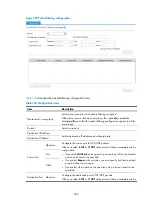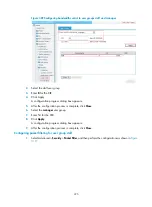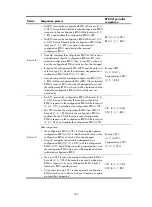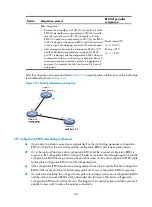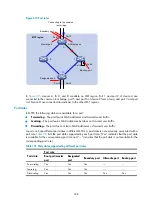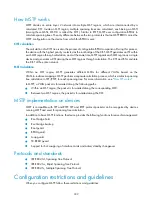
297
Configuring MSTP
Only MSR20/30/50/93X/1000 routers support this feature.
As a Layer 2 management protocol, the Spanning Tree Protocol (STP) eliminates Layer 2 loops by
selectively blocking redundant links in a network, and allows for link redundancy.
Like many other protocols, STP evolves as the network grows. The later versions of STP are the Rapid
Spanning Tree Protocol (RSTP) and the Multiple Spanning Tree Protocol (MSTP). This chapter describes
the characteristics of STP, RSTP, and MSTP.
Introduction to STP
STP was developed based on the 802.1d standard of IEEE to eliminate loops at the data link layer in a
LAN. Devices running this protocol detect loops in the network by exchanging information with one
another and eliminate loops by selectively blocking certain ports to prune the loop structure into a
loop-free tree structure. This avoids proliferation and infinite cycling of packets that would occur in a loop
network and prevents decreased performance of network devices caused by duplicate packets received.
In the narrow sense, STP refers to the IEEE 802.1d STP. In the broad sense, STP refers to the IEEE 802.1d
STP and various improved spanning tree protocols derived from that protocol.
STP protocol packets
STP uses bridge protocol data units (BPDUs), also known as configuration messages, as its protocol
packets.
STP-enabled network devices exchange BPDUs to establish a spanning tree. BPDUs contain sufficient
information for the network devices to complete spanning tree calculation.
In STP, BPDUs have the following types:
•
Configuration BPDUs
—Used for calculating a spanning tree and maintaining the spanning tree
topology.
•
Topology change notification (TCN) BPDUs
—Used for notifying the concerned devices of network
topology changes, if any.
Basic concepts in STP
Root bridge
A tree network must have a root bridge.
There is only one root bridge in the entire network. The root bridge is not fixed, but can change along
with changes of the network topology.
When a network is initialized, each device generates and sends out BPDUs periodically with itself as the
root bridge. After network convergence, only the root bridge generates and sends out configuration
BPDUs at a certain interval, and the other devices just forward BPDUs.
Summary of Contents for MSR SERIES
Page 17: ...xv Documents 835 Websites 835 Conventions 836 Index 838 ...
Page 20: ...3 Figure 3 Initial page of the Web interface ...
Page 42: ...25 Figure 13 Firefox Web browser setting ...
Page 59: ...42 Figure 27 Checking the basic service configuration ...
Page 73: ...56 Figure 35 Sample interface statistics ...
Page 156: ...139 Figure 139 Rebooting the 3G modem ...
Page 168: ...151 Figure 152 Configuring Web server 2 ...
Page 174: ...157 Figure 158 Configure the URL filtering function ...
Page 242: ...225 Figure 233 Enabling the DHCP client on interface Ethernet 0 1 ...
Page 247: ...230 Figure 236 The page for configuring an advanced IPv4 ACL ...
Page 255: ...238 Figure 241 Advanced limit setting ...
Page 298: ...281 e Click Apply 2 Configure Router B in the same way Router A is configured ...
Page 400: ...383 Figure 387 Verifying the configuration ...
Page 405: ...388 ...
Page 523: ...506 Figure 530 Ping configuration page ...
Page 775: ...758 Figure 785 Configuring a jump node ...






